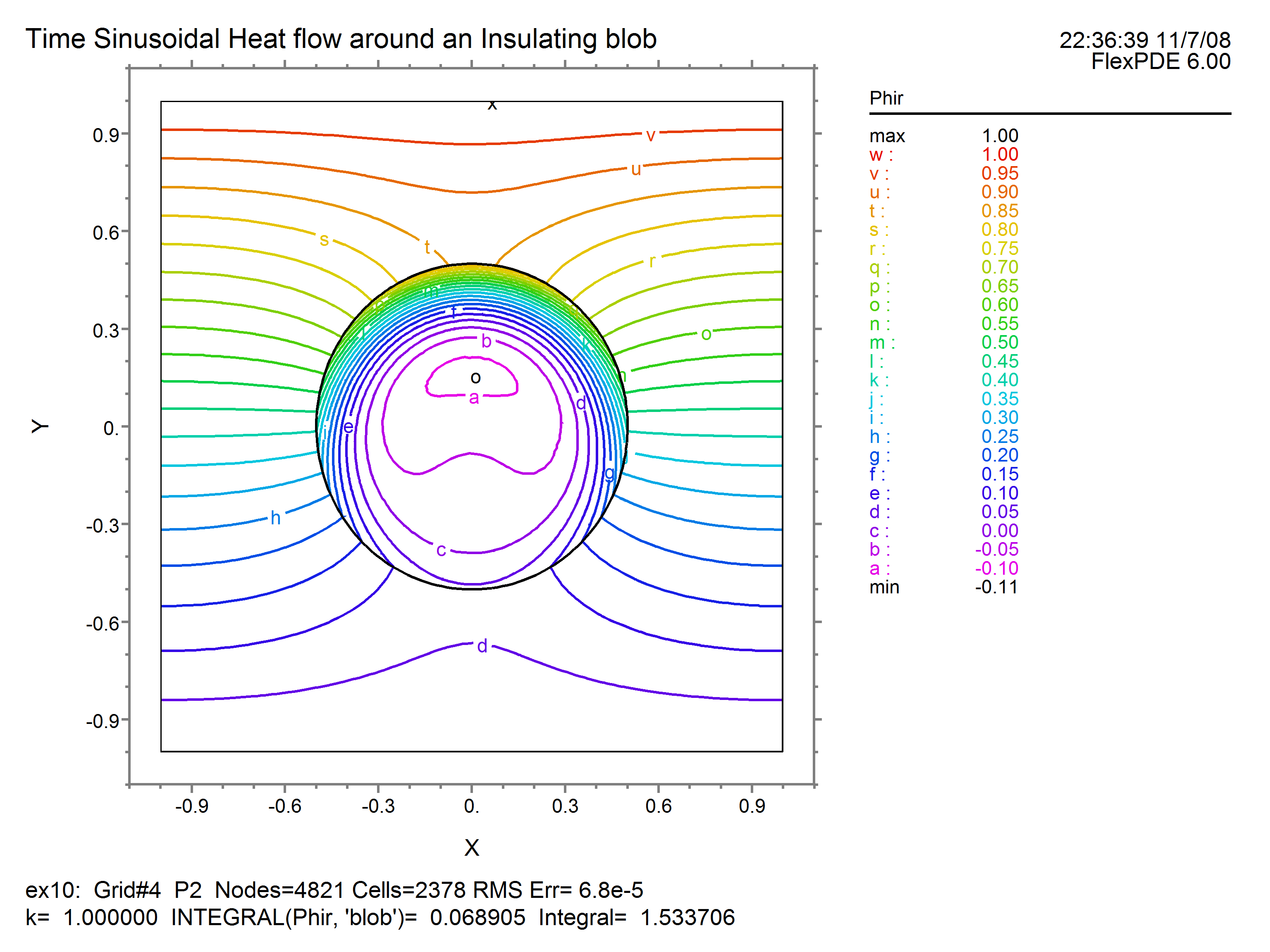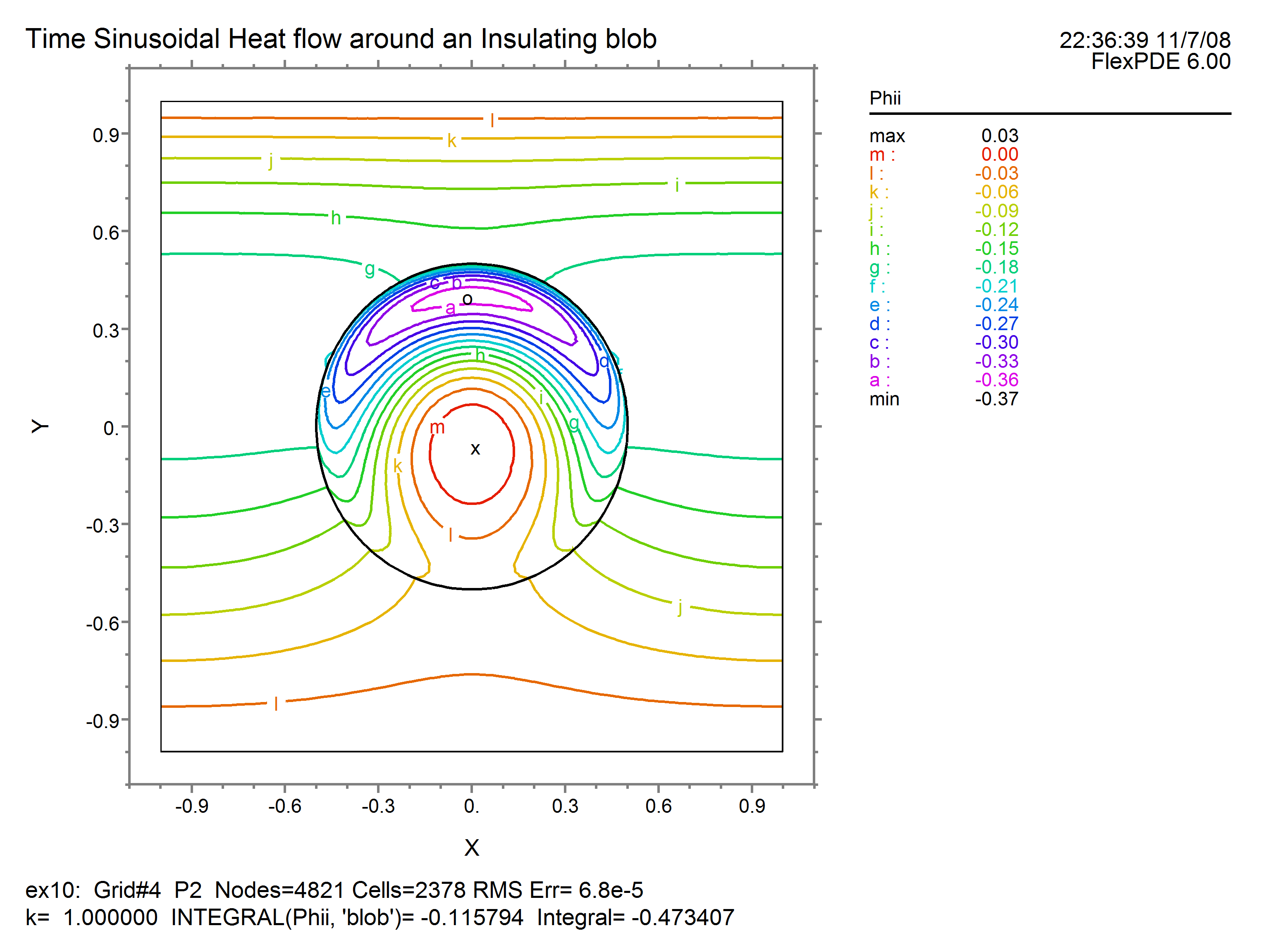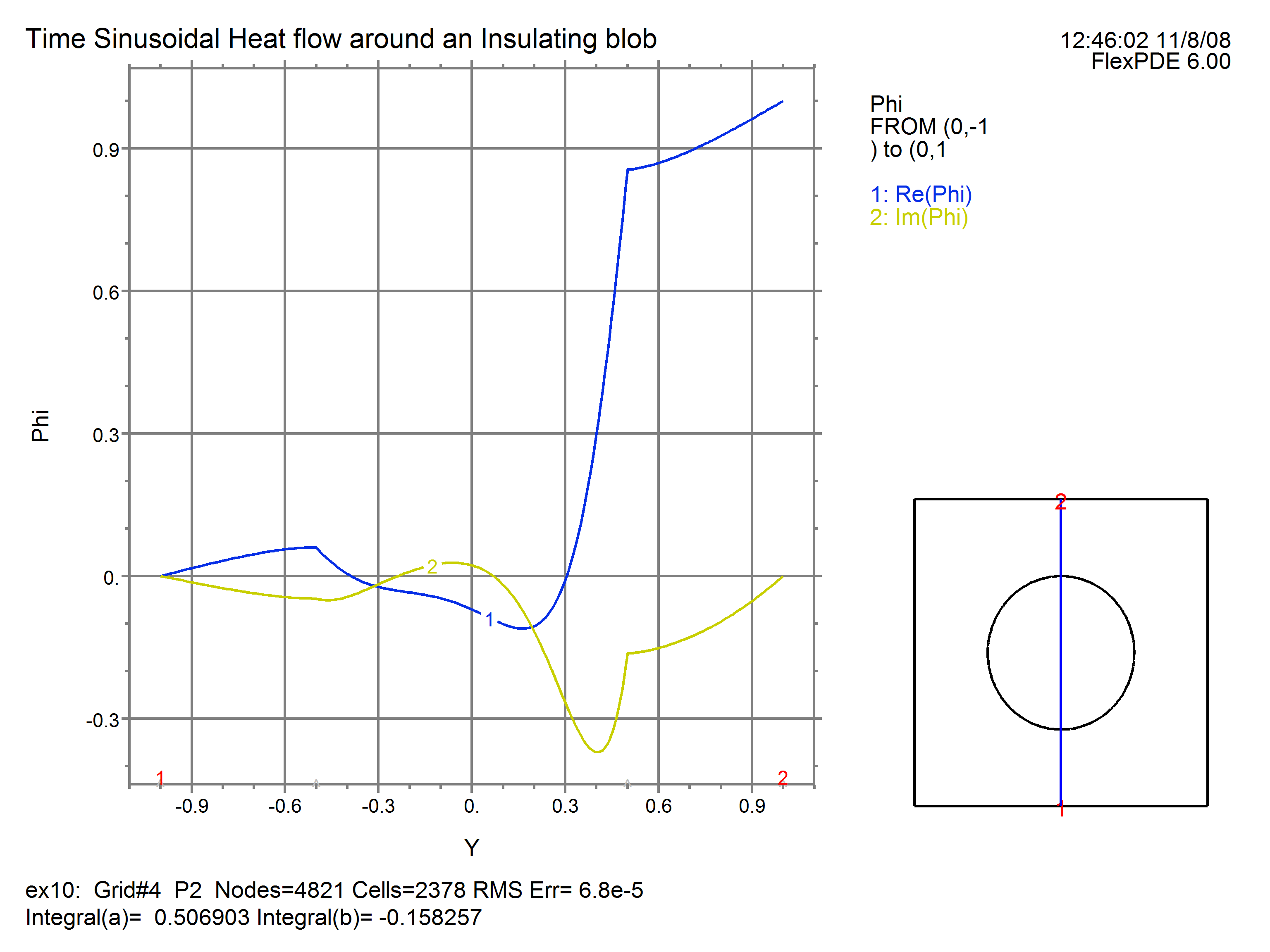|
<< Click to Display Table of Contents >> The Time-Sinusoidal Heat |
  
|
|
<< Click to Display Table of Contents >> The Time-Sinusoidal Heat |
  
|
Suppose we wish to discover the time-dependent behavior of our example Cartesian blob due to the application of a time-sinusoidal applied temperature.
The time-dependent heat equation is Div(K*Grad(Phi)) = Cp*dt(Phi)
If we assume that the boundary values and solutions can be represented as
Phi(x,y,t) = Aphi(x,y)*exp(i*omega*t)
Substituting in the heat equation and dividing out the exponential term, we are left with a complex equation
Div(K*Grad(Aphi)) - Complex(0,1)*omega*Cp*Aphi = 0
The time-varying temperature Phi can be recovered from the complex Aphi simply by multiplying by the appropriate time exponential and taking the real part of the result.
Assuming for simplicity that omega=1 and Cp=1, the modified script becomes:
TITLE 'Heat flow around an Insulating blob'
VARIABLES
APhi = Complex(APhir,APhii) { the complex temperature amplitude }
DEFINITIONS
K = 1 { default conductivity }
R = 0.5 { blob radius }
EQUATIONS
APhi: Div(-k*grad(APhi)) - Complex(0,1)*APhi = 0
BOUNDARIES
REGION 1 'box'
START(-1,-1)
VALUE(APhi)=Complex(0,0) LINE TO (1,-1)
NATURAL(APhi)=Complex(0,0) LINE TO (1,1)
VALUE(APhi)=Complex(1,0) LINE TO (-1,1)
NATURAL(APhi)=Complex(0,0) LINE TO CLOSE
REGION 2 'blob' { the embedded blob }
k = 0.01 { change K for prettier pictures }
START 'ring' (R,0)
ARC(CENTER=0,0) ANGLE=360 TO CLOSE
PLOTS
CONTOUR(APhir) CONTOUR(APhii)
VECTOR(-k*grad(APhir))
ELEVATION(APhi) FROM (0,-1) to (0,1)
ELEVATION(Normal(-k*grad(APhir))) ON 'ring'
END
Running this script produces the following results for the real and imaginary components:


The ELEVATION trace through the center shows:
